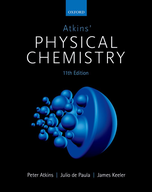?Show that the linear combinations
Chapter 9, Problem E9A.7(a)(choose chapter or problem)
Show that the linear combinations \(h_{1}=\mathrm{s}+\mathrm{p}_{x}+\mathrm{p}_{y}+\mathrm{p}_{z}\) and \(h_{2}\) = \(\mathrm{s}-\mathrm{p}_{x}-\mathrm{p}_{y}+\mathrm{p}_{z}\) are mutually orthogonal.
Text Transcription:
h_1=s+p_x+p_y+p_z
h_2
s-p_x-p_y+p_z
Unfortunately, we don't have that question answered yet. But you can get it answered in just 5 hours by Logging in or Becoming a subscriber.
Becoming a subscriber
Or look for another answer
